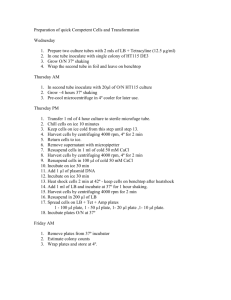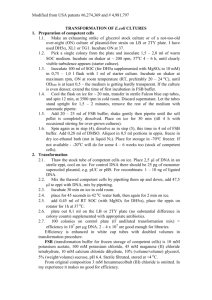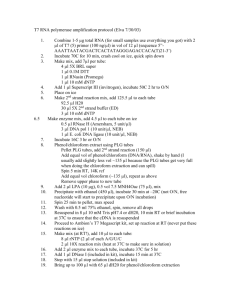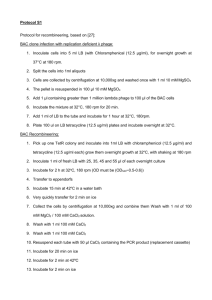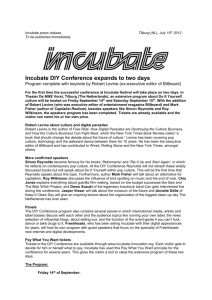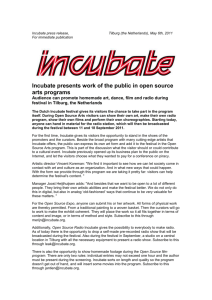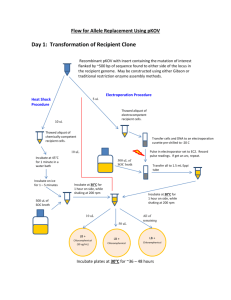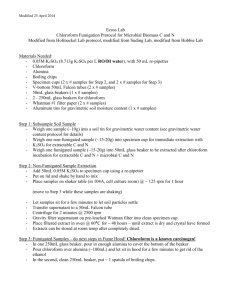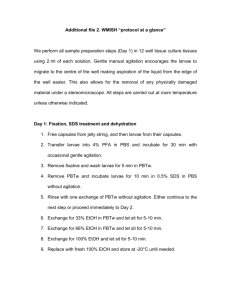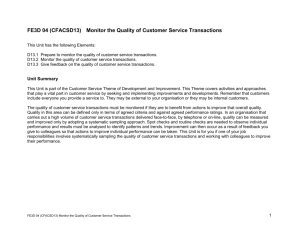Protocol for cytochrome bo 3 reconstitution
advertisement
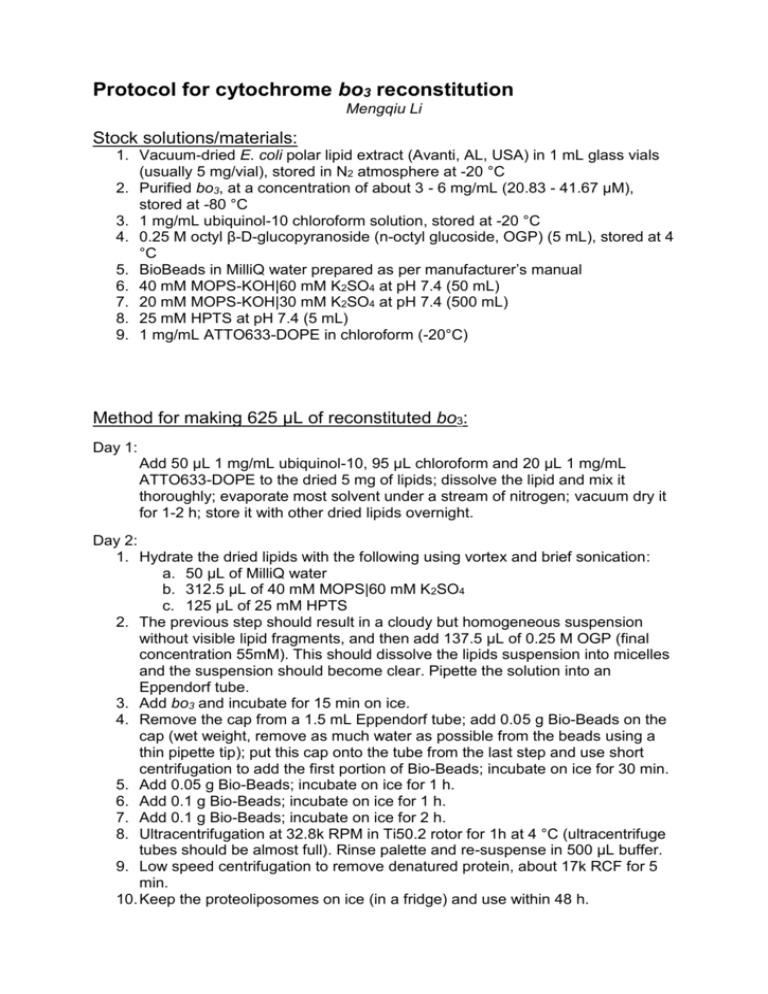
Protocol for cytochrome bo3 reconstitution Mengqiu Li Stock solutions/materials: 1. Vacuum-dried E. coli polar lipid extract (Avanti, AL, USA) in 1 mL glass vials (usually 5 mg/vial), stored in N2 atmosphere at -20 °C 2. Purified bo3, at a concentration of about 3 - 6 mg/mL (20.83 - 41.67 µM), stored at -80 °C 3. 1 mg/mL ubiquinol-10 chloroform solution, stored at -20 °C 4. 0.25 M octyl β-D-glucopyranoside (n-octyl glucoside, OGP) (5 mL), stored at 4 °C 5. BioBeads in MilliQ water prepared as per manufacturer’s manual 6. 40 mM MOPS-KOH|60 mM K2SO4 at pH 7.4 (50 mL) 7. 20 mM MOPS-KOH|30 mM K2SO4 at pH 7.4 (500 mL) 8. 25 mM HPTS at pH 7.4 (5 mL) 9. 1 mg/mL ATTO633-DOPE in chloroform (-20°C) Method for making 625 µL of reconstituted bo3: Day 1: Add 50 µL 1 mg/mL ubiquinol-10, 95 µL chloroform and 20 µL 1 mg/mL ATTO633-DOPE to the dried 5 mg of lipids; dissolve the lipid and mix it thoroughly; evaporate most solvent under a stream of nitrogen; vacuum dry it for 1-2 h; store it with other dried lipids overnight. Day 2: 1. Hydrate the dried lipids with the following using vortex and brief sonication: a. 50 µL of MilliQ water b. 312.5 µL of 40 mM MOPS|60 mM K2SO4 c. 125 µL of 25 mM HPTS 2. The previous step should result in a cloudy but homogeneous suspension without visible lipid fragments, and then add 137.5 µL of 0.25 M OGP (final concentration 55mM). This should dissolve the lipids suspension into micelles and the suspension should become clear. Pipette the solution into an Eppendorf tube. 3. Add bo3 and incubate for 15 min on ice. 4. Remove the cap from a 1.5 mL Eppendorf tube; add 0.05 g Bio-Beads on the cap (wet weight, remove as much water as possible from the beads using a thin pipette tip); put this cap onto the tube from the last step and use short centrifugation to add the first portion of Bio-Beads; incubate on ice for 30 min. 5. Add 0.05 g Bio-Beads; incubate on ice for 1 h. 6. Add 0.1 g Bio-Beads; incubate on ice for 1 h. 7. Add 0.1 g Bio-Beads; incubate on ice for 2 h. 8. Ultracentrifugation at 32.8k RPM in Ti50.2 rotor for 1h at 4 °C (ultracentrifuge tubes should be almost full). Rinse palette and re-suspense in 500 µL buffer. 9. Low speed centrifugation to remove denatured protein, about 17k RCF for 5 min. 10. Keep the proteoliposomes on ice (in a fridge) and use within 48 h.
